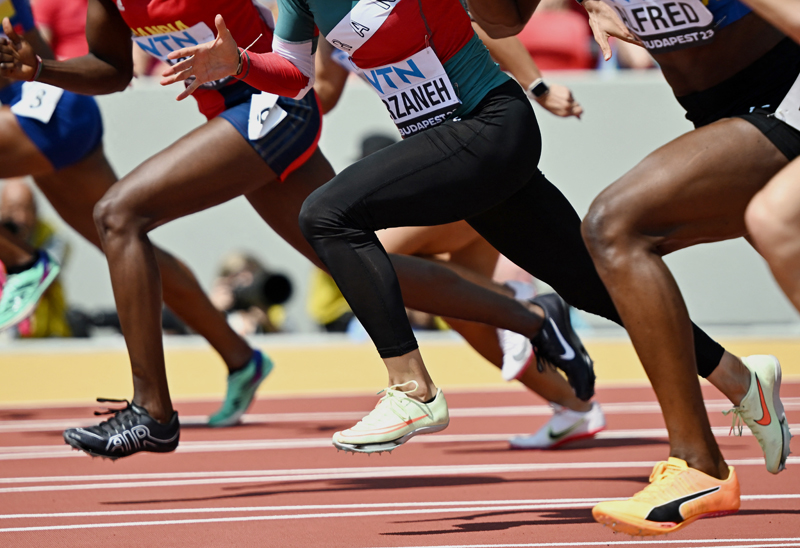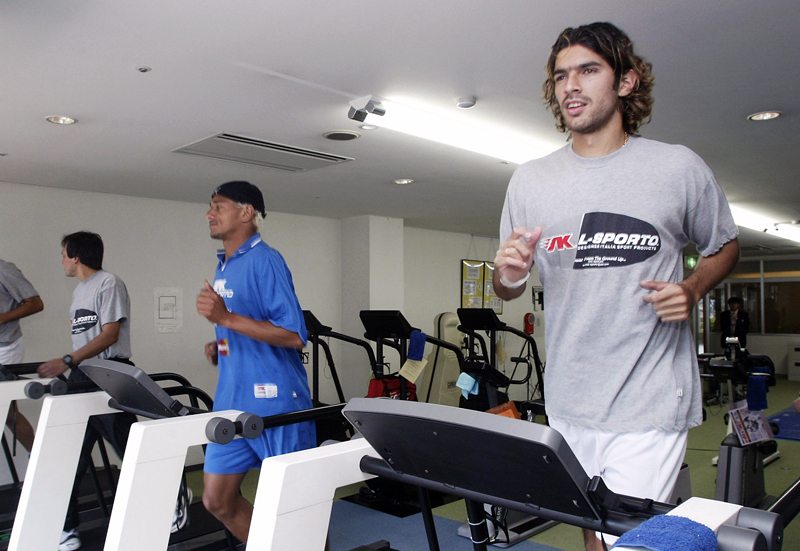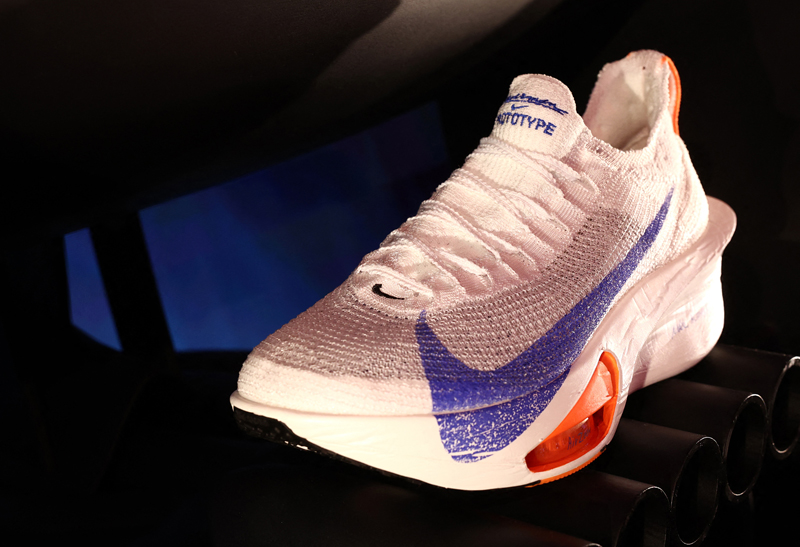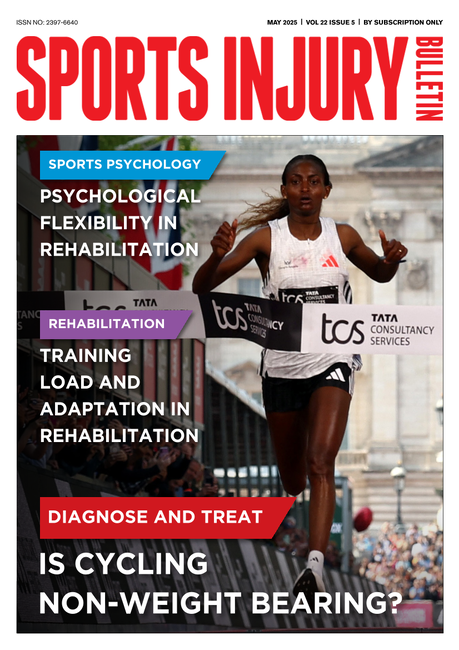Running technology: squeezing out better performance?

The story of compression clothing use for sports performance actually began as a medical curiosity when studies on the use of compression garments for postoperative patients showed that they offered significant protection against a venous thrombosis (a blockage caused by a blood clot, which prevents the flow of blood). Subsequent research showed that compression clothing was able to enhance venous blood flow (the flow back to the heart) in the lower limbs and it wasn’t long before scientists began investigating the effects of compression clothing on an athletic performance, initially focusing on power-based sports.
What is compression clothing?
There’s no strict definition of what exactly constitutes a ‘compression garment’ as a look through the clothing manufacturers’ blurb tends to confirm! However, although it comes in various guises, the main feature of compression clothing is its high content of materials such as nylon and synthetic elastic fabrics, or a mixture containing these materials plus others(1,2). Compression garments for sports involving running typically include tights, socks, calf sleeves, and shorts. However, regardless of the garment, the goal is the same: to place an optimal amount of firm pressure on the athlete’s body, which is thought to increase blood flow(3), reduce muscle oscillations (reduced muscle oscillation may help promote enhanced neurotransmission of the signals needed to activate muscle fibers)(4), and improve the control and stability of movement helping to make the running motion movement more energy efficient(5,6).
Compression clothing for runners
As mentioned above, a number of studies have demonstrated that compression garments can help increase muscle blood flow, reduce oscillations and improve control and stability of movements. But how do these apparently beneficial effects translate into running performance? In short, if a runner wears compression clothing during or after running, is his or her performance likely to be significantly enhanced? With the continuing advances and innovation in compression garment design and technology and increasing market demand for compression gear by runners, there has been an increase in the number of studies focusing on the mechanisms and performance outcomes of wearing compression gear - either during or after running(7). However, the evidence from these studies on the use of compression garments for running performance has not been at all clear cut.
For example, a 2018 meta-analysis study (a study that pools the findings from previous studies and analyzes that pooled data to arrive at more robust conclusions) revealed that, among many other outcomes, there were no beneficial effects of wearing compression garments on running performance compared to controls who ran without compression garments(8). By contrast, a 2023 study investigated the use of compression garments in a range of sportsmen and women, and found that their use significantly improved speed, endurance, and functional motor performance(9). However, the wide array of outcomes measured in this meta study and the large variety of sporting events included in the analysis (ie not just running but swimming and cycling too) means that there is much less confidence about the benefits of compression garments when considering just runners. Overall then we can conclude that despite the large body of research on this topic, the exact magnitude of the benefits of compression garments for runners remains unclear!
New research
To try and determine if and by how much runners can expect to benefit from the use of compression clothing, either during or after running, a team of sports scientists from the University of Shanghai in China has investigated compression clothing effects solely in runners(10). Published in the Journal of Sport and Health Science, this study also took the form of a meta review, where data from a large number of prior studies on compression clothing use and running performance was pooled and analyzed.
To do this, the researchers scoured the medical and sport science databases for studies on the use of compression clothing to enhance running performance, and where the goal was to assess the effect of these garments on race times and times to exhaustion. In addition, they also looked at other outcomes (where the data was available) such as running speed and race pace, submaximal oxygen uptake, tissue oxygenation, and the amount of soft tissue vibration. When sifting through the databases, the researchers only looked for studies that met the following criteria:
· Used healthy runners of any sex, age, or performance level in a randomized controlled trial (where like runners were compared with like runners and where wearing a compression garment was compared with either a non-compression garment (ie looked similar but was a placebo) or control groups who wore no compression garments or placebos were worn at all).
· Where the runner wore compression garments covering the lower limbs (including whole-body compression garments).
· Where the measured outcome was at minimum race times or times to exhaustion.
· Where the studies had original full-text papers in English and had been published in a peer-reviewed journal.
Meanwhile, studies were excluded if:
· The compression garments were used as any form of treatment or preventative strategy (eg injury prevention).
· The compression garments were used along with other intervention strategies (eg nutrition, cold water immersion, stretching etc).
· They included only upper-body compression garments.
In total, 51 studies published between 1987 and 2024 were deemed eligible and included. The total number of participants in these studies included was 899, with the number of participants per study ranging from 6 to 67 and with ages of the participants ranging from 18 to 60 years old. These studies used different garment types, runners performing different distances and in different settings. Figure 1 below gives a breakdown in terms of percentages of the study characteristics included.
Figure 1: Characteristics of the included studies
You need to be logged in to continue reading.
Please register for limited access or take a 30-day risk-free trial of Sports Performance Bulletin to experience the full benefits of a subscription. TAKE A RISK-FREE TRIAL
TAKE A RISK-FREE TRIAL
Newsletter Sign Up
Testimonials
Dr. Alexandra Fandetti-Robin, Back & Body Chiropractic
Elspeth Cowell MSCh DpodM SRCh HCPC reg
William Hunter, Nuffield Health
Newsletter Sign Up
Coaches Testimonials
Dr. Alexandra Fandetti-Robin, Back & Body Chiropractic
Elspeth Cowell MSCh DpodM SRCh HCPC reg
William Hunter, Nuffield Health
Keep up with latest sports science research and apply it to maximize performance
Today you have the chance to join a group of athletes, and sports coaches/trainers who all have something special in common...
They use the latest research to improve performance for themselves and their clients - both athletes and sports teams - with help from global specialists in the fields of sports science, sports medicine and sports psychology.
They do this by reading Sports Performance Bulletin, an easy-to-digest but serious-minded journal dedicated to high performance sports. SPB offers a wealth of information and insight into the latest research, in an easily-accessible and understood format, along with a wealth of practical recommendations.
*includes 3 coaching manuals
Get Inspired
All the latest techniques and approaches
Sports Performance Bulletin helps dedicated endurance athletes improve their performance. Sense-checking the latest sports science research, and sourcing evidence and case studies to support findings, Sports Performance Bulletin turns proven insights into easily digestible practical advice. Supporting athletes, coaches and professionals who wish to ensure their guidance and programmes are kept right up to date and based on credible science.









